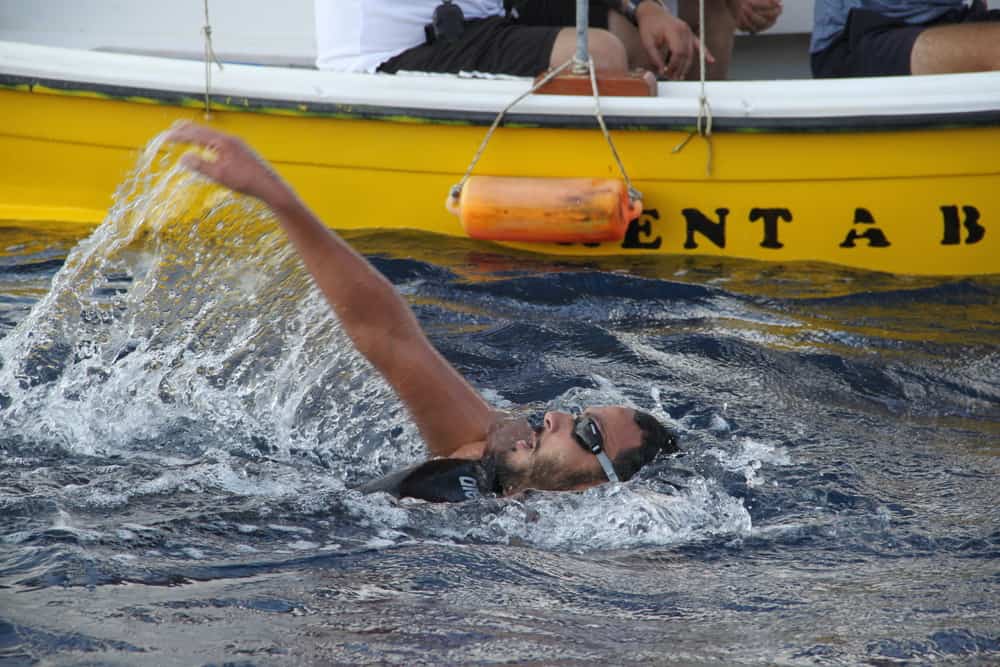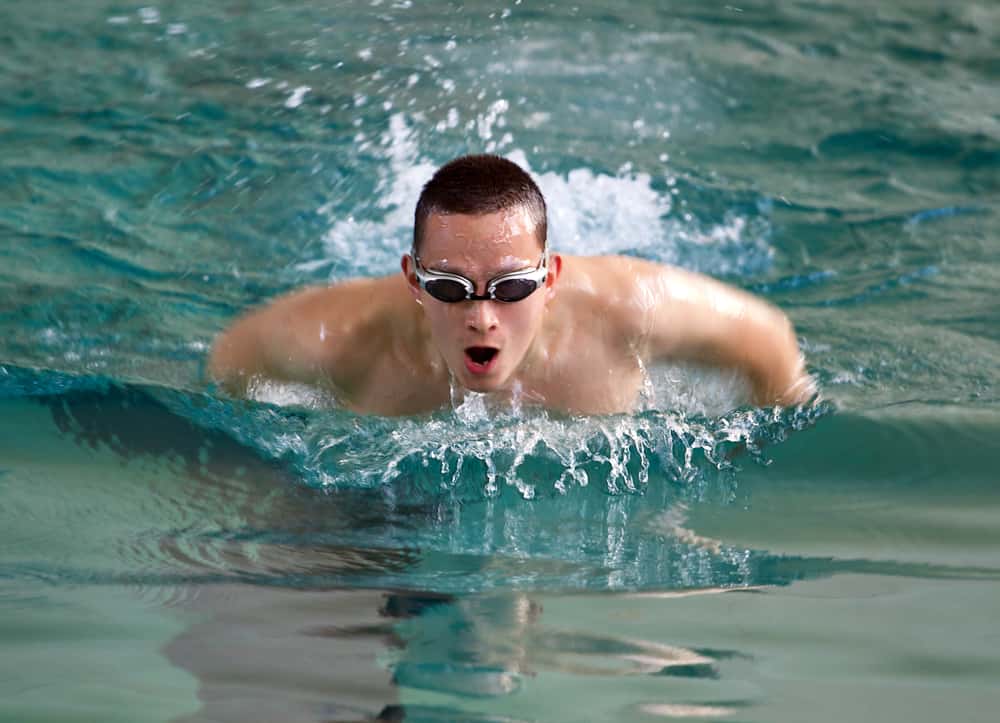Swimming is an excellent exercise for overall fitness and health. It’s great for a full-body workout without putting too much stress on your ligaments and tendons. Everyone, regardless of age, can benefit from and take pleasure in swimming, whether for recreational purposes or as a competitive sport. When swimming freestyle for long distances, it is essential to maintain a robust and consistent stroke.
Here are some tips to help you swim farther and faster

- Keep your head down and your eyes focused on the bottom of the pool. This will help you stay streamlined and reduce drag on your body.
- Use a solid kick to propel yourself forward. Drive your legs down hard into the water and keep them together as you kick.
- Pull with your arms in a smooth, steady motion. Imagine that you are pulling the water back to your feet.
- Take deep breaths and exhale underwater to create more resistance against which to swim.
- Stay relaxed and comfortable as you swim; strive for a balanced stroke that feels natural to you.”
Table of Contents
The Benefits of Swimming Freestyle for Long Distances
Swimming is an excellent form of exercise that provides many health benefits. Swimming freestyle for long distances is one of the best ways to get these benefits. Swimming is a great full-body workout that also lowers stress on the joints.

Overall fitness and health can be significantly improved by swimming. It is low impact, so it is accessible to the joints and provides a full-body workout. Swimming can be done for leisure or competition, and people of all ages can enjoy it.
Swimming freestyle for long distances can help you lose weight, tone your muscles, improve your cardiovascular health, and increase your endurance. Swimming is also a great way to relax and de-stress. Swimming freestyle for long distances is a great option to improve your health and well-being.
What You Need to Know Before Swimming Freestyle for Long Distances
Swimming freestyle for long distances can be a great way to stay in shape, but there are a few things you need to know before you get started. First and foremost, starting slowly and gradually building your distance is essential.

You don’t want to push yourself too hard right at the beginning and get injured. Second, make sure you are well-hydrated before and during your swim. Swimming is very strenuous; if you’re not adequately hydrated, you could feel lightheaded or nauseous. Third, focus on proper technique and maintaining good form.
Swimming with poor technique can quickly lead to fatigue, so focusing on your body position and arm movement throughout the entire swim is essential. And finally, be sure to cool down properly after your swim. A good cool-down will help relax your muscles and prevent any post-swim soreness.
How to Train for Swimming Freestyle for Long Distances
The importance of endurance, speed work, technique, and cooling down can not be overstated when it comes to swimming freestyle for long distances. Persistence is essential – you need to be able to swim for a long time without tiring.

Speed work will help you move through the water faster, which can be crucial in long-distance swims. The technique is essential to ensure you swim as efficiently as possible, saving energy. After finishing your swim, it is necessary to cool down so your body can recover.
Endurance is key to swimming freestyle for long distances. The best way to build endurance is to swim regularly. Make sure to warm up before swimming, and then swim at a moderate pace for a sustained period. You can also do interval training, swim for a short time, and then take a break. Over time, you will be able to swim for longer and longer periods.
Speed work is another essential element of training for long-distance swimming. To do speed work, you can swim sprints. Swim at your maximum pace for a short distance, and then take a break. You can also do swimming drills to improve your speed.
The technique is crucial for maximizing swimming efficiency. When swimming, keep your head down and use your arms and legs in a smooth, coordinated motion. If you are new to swimming, taking a class or lessons may help you learn the proper technique.
Finally, cooling down properly helps your body recover from the swim. After you finish swimming, be sure to do some gentle stretching. It would help if you also drank plenty of fluids to rehydrate yourself. Cooling down helps your body repair any damage that was done during the swim, and it also helps prevent injuries.
Tips and Tricks for Swimming Freestyle for Long Distances
For those who want to build stamina and velocity, freestyle swimming is a fantastic option. You’ll need to train your technique and stick to a few basic guidelines, though, if you want to swim long distances using the freestyle stroke. You’ll be able to swim further and faster if you do this.

The importance of practicing proper technique cannot be overstated. If you want to swim freestyle for long distances, you must ensure that your method is as efficient as possible. This means keeping your head, arms parallel to your body, and legs together.
In addition, there are a few simple tips that you can follow to help you swim farther and faster. For example, keep your strokes even and consistent, and focus on pushing off the wall with each stroke. Additionally, try to take deep breaths and relax your body as much as possible.
The Challenges of Swimming Freestyle for Long Distances
Swimming freestyle is a terrific way to build stamina and speed but to swim for extended periods, you need to perfect your technique and adhere to a few basic guidelines. You’ll be able to swim further and faster than ever if you follow these instructions.
However, there are some challenges you’ll face when trying to swim freestyle for long distances, such as fatigue and boredom. But with the right mindset and preparation, you can overcome obstacles and achieve your swimming goals.
Proper technique is essential for swimming freestyle for long distances. Keep your head and spine aligned, practice a strong kick, and use your arms to pull yourself through the water. Keep your hands close to your body, and make sure your stroke is smooth and efficient. If you can master these techniques, you’ll be well on your way to swimming freestyle for long distances!
Weariness is one of your main obstacles when attempting long-distance freestyle swimming. It’s important to pace yourself and take breaks when you need them. Another challenge is boredom – try to find ways to stay motivated, such as listening to music or setting goals. If you can overcome these challenges, you’ll be able to swim freestyle for long distances!
